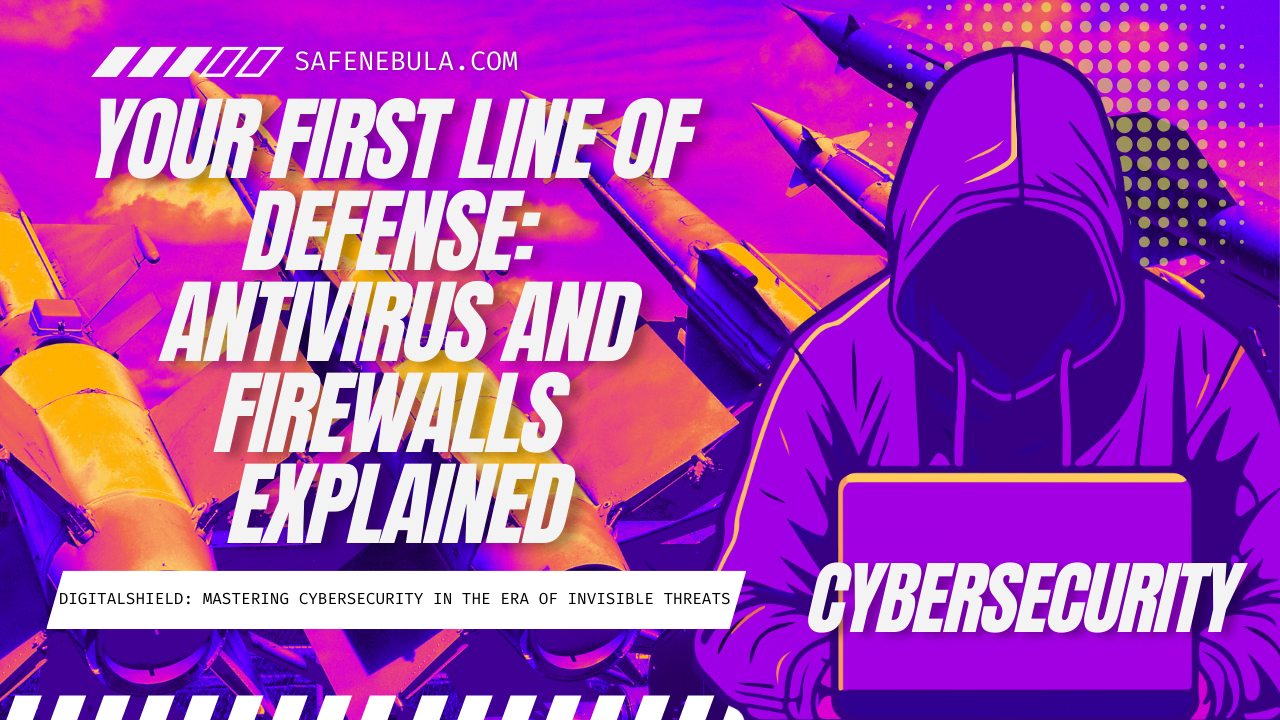In today’s digital age, navigating the vast expanse of the internet safely is akin to steering a ship through waters teeming with unseen threats. Just as a ship has its hull to protect against the ocean, your devices need robust defenses against the myriad of cyber threats lurking online. This essential guide is tailored for beginners, introducing you to your first line of defense against digital dangers: antivirus software and firewalls. Understanding these tools and implementing them effectively can shield your personal information and devices from harm, ensuring a safer journey through the digital world.
Antivirus Software: Your Digital Immune System
Antivirus software acts much like the body’s immune system, designed to detect, quarantine, and eliminate viruses and malware before they can inflict damage.

Malware encompasses a variety of malicious software, including viruses, worms, trojan horses, and ransomware, each designed to disrupt, damage, or gain unauthorized access to your computer system.
Key Features to Look For:
- Real-time scanning: Continuously checks your system for malware as files are opened, programs are run, and downloads are completed.
- Automatic updates: Regularly updates its database to recognize the latest malware.
- Heuristic analysis: Identifies unknown viruses by examining code for traits typical of malware.
- System cleaning: Removes infections from your computer and repairs any damage caused.
Recommended Antivirus Software for Beginners:
- Avast Free Antivirus: Offers robust protection against viruses and malware with a user-friendly interface.
- Bitdefender Antivirus Free Edition: Known for its discreet but effective protection without bogging down your system.
- Sophos Home Free: Provides simple, effective security, with remote management for up to three devices.
Firewalls: The Gatekeepers of Your Network
While antivirus software scans for malware within your device, firewalls serve as gatekeepers for your network, monitoring incoming and outgoing traffic based on a set of security rules.

Think of a firewall as a digital barrier or checkpoint that decides which traffic is safe enough to enter or leave your network.
Types of Firewalls:
- Hardware Firewalls: Physical devices positioned between your network and gateway (such as a router) that protect your entire network.
- Software Firewalls: Installed on individual devices, offering personalized control over your device’s network traffic.
Key Features to Look For:
- Intrusion Detection and Prevention: Monitors network traffic for suspicious activity and blocks potential threats.
- Customizable Security Rules: Allows you to tailor traffic rules based on your security needs.
- User-Friendly Interface: Ensures you can easily configure settings and understand alerts.
Recommended Firewalls for Beginners:
- ZoneAlarm Free Firewall: Provides a solid layer of protection against inbound and outbound cyber attacks, easy for beginners to navigate.
- Comodo Free Firewall: Offers a user-friendly interface with robust protection and a sandbox feature to safely run unknown applications.
- GlassWire: Besides firewall capabilities, it provides network monitoring features, showing you what your computer is doing in the background.
Integrating Antivirus and Firewalls: A Unified Defense
For comprehensive protection, it’s crucial to use both antivirus software and a firewall. While antivirus software cleanses your device of infections, a firewall prevents malicious traffic from ever reaching your device. Together, they form a dynamic duo that significantly enhances your digital security.
Implementing these defenses equips you with the knowledge to navigate the digital seas safely. Remember, the cyber world evolves rapidly, with new threats emerging constantly. Keeping your antivirus and firewall updated, alongside practicing safe browsing habits, fortifies your defenses against the ever-changing landscape of cyber threats.
Welcome to the beginning of a safer digital journey with Safenebula. Stay tuned for more insights and guides to empower your cybersecurity knowledge.

